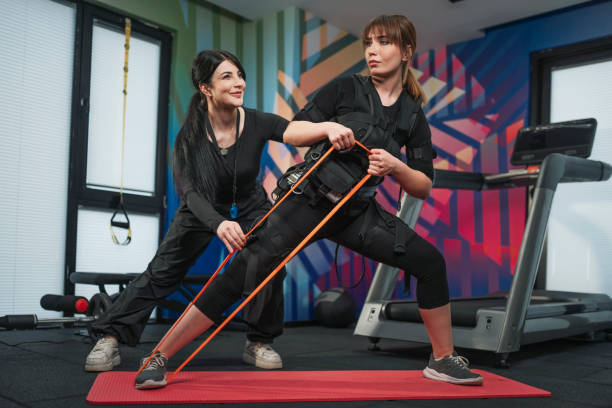How to Identify and Treat Tennis Elbow for Long-term Relief
Tennis elbow, alternatively called lateral epicondylitis, is one of those common injuries found to affect persons who repeatedly use their arms and wrists. Regardless of the name, tennis elbow need not be related to tennis; it can strike anyone whose daily activity overstrains the muscles in the forearm. Early identification and proper treatment may help treat this condition and prevent its progression.
Identifying Tennis Elbow
Tennis elbow is the inflammation of the tendons on the lateral side of the elbow that causes pain and tenderness. It is mainly due to the overuse of the tendons in the forearm. The following are some common symptoms that will help you identify tennis elbow:
- Pain on the Outer Elbow: The most common symptom is a burning or aching feeling on the lateral side of the elbow that may be aggravated by activity.
- Pain when lifting or holding anything: You may experience pain due to lifting objects, gripping, or even handshaking.
- Weakness of the forearm: The arm on the injured side will feel weak when performing activities involving normal chores.
- Gradual progress: Symptoms of an elbow injury of this kind always come gradually. Initially, you might feel pains slightly and become worse with time.
If you are experiencing such symptoms, you must consult a professional. A Surrey Physiotherapy Clinic would assess your condition and develop a treatment tailored to your specific case.
Effective Treatments
1. R&R with Activity Modification
The first step in recovery is avoiding those activities that worsen the pain. This can be ceasing all sporting activity or reducing movements in your wrists and arms that can become repetitive. Avoiding such activities might allow your arm to heal thus keeping it from further aggravation.
2. Ice Therapy
Applying ice to the affected region may be helpful for 15-20 minutes multiple times a day to decrease inflammation and pain. This is a very simple procedure, especially for the initial stages of injury.
3. The Counter Pain Relief
Administration of pain and reduction of inflammation can be very helpful with the use of NSAIDs such as ibuprofen. These should only be used for a short term though.
4. Physiotherapy in Surrey
Physiotherapy is one of the most effective treatment and management options for tennis elbow. A physiotherapy clinic in Surrey will assist you with various treatments and exercises that could strengthen the forearm muscles and help alleviate pain.
- Stretching and Strengthening Exercises: A physiotherapist will provide you with targeted exercises that stretch and strengthen the forearm muscles, eventually relieving tension on the inflamed tendons.
- Manual Therapy: Physiotherapists can use massage and other hands-on techniques to try to break up tension in the muscles and improve blood flow to the affected area.
- Ultrasound Therapy: Some Physiotherapy Surrey clinics offer ultrasound therapy that involves the use of sound waves to penetrate deep into tissues, promoting healing and reducing inflammation.
5. Bracing or Splinting: A brace or a forearm strap is worn to help the muscles and tendons support the arm and decrease pressure on the affected area, thus reducing pain, especially during activities such as gripping or lifting.
6. Shockwave Therapy: Some Physiotherapy Surrey clinics give shockwave therapy as a non-invasive process to accelerate healing by forcing shockwaves onto the affected area. Shockwave therapy can reduce the amount of pain and encourage tissue regeneration-a major help in tennis elbow symptoms after some time.
7. Dry Needling: Dry needling is the stimulation of muscles’ trigger points applied by physiotherapists. This will be injecting thin needles on specific points to alleviate the tension and lessen the pain. Many found relief to their tennis elbow symptoms once they underwent this kind of treatment, especially when held in conjunction with physiotherapy.
Handling and Prevention Exercises for Tennis Elbow
Physiotherapists commonly prescribe a set of exercises that strengthen the muscles of the forearm, reduce pain, and prevent further injury. Here are the common exercises prescribed by Physiotherapy Clinics in Surrey:
- Wrist Extension Stretch: Hold your affected arm out in front of you with your palm facing down. Using your other hand, gently pull the hand down to stretch the forearm muscles. Hold for 15-30 seconds, then release. Repeat 3 times.
- Towel Twist: Hold the towel with both hands. Twist it like you are wringing out water. It will work on your forearm and can do it every day.
- Finger Stretch: Wrap a rubber band over your fingers and your thumb. Open them gently and then close them in a stretch developing the extensor muscles. Do this 15 times.
These exercises combined with professional Physiotherapy Surrey advice can greatly strengthen and flex your forearm for better management and prevention of tennis elbow.
Prevention Tips
Though there are indeed good treatment options, prevention is always better than cure. Here are some tips that will help you minimize your risk of developing or exacerbating tennis elbow:
- Practice Proper Technique: Whether playing sports or doing everyday tasks, proper techniques can prevent strain on your forearm.
- Use the Right Equipment: Make use of ergonomic tools or sporting equipment designed to impose less pressure on your arms. For example, with the help of a racquet with the right grip size, the risk of an injury can be avoided.
- Develop Resistance in Forearm Muscles: Consistent strengthening of the forearm muscles will develop resistance and thus overuse injuries are prevented.
- Take Frequent Breaks: Prevent long-time repetitive movements without taking breaks. Taking breaks will allow the muscles and tendons to have a little rest.
When to Seek Expert Help
However, when tennis elbow symptoms fail to resolve with a combination of self-treatments in home remedies, consulting Physiotherapy Clinics Surrey will be well. As long as the assessment comes professional, it leads you to the proper diagnosis that goes hand-in-hand with treatment procedures. Of course, advice about coping and avoiding subsequent relapses would also not be missed if a physiotherapist handles the consultation process. Recognize the signs early and seek the help of a Physiotherapy in Surrey for efficient relief to go back to all your favorite activities pain-free. Exercises, bracing, shockwave therapy, and many more advanced treatments within physiotherapy can be curative for tennis elbow. You should not limit your active life because of tennis elbow—contact a Physiotherapy Surrey expert and begin your road to recovery today.




